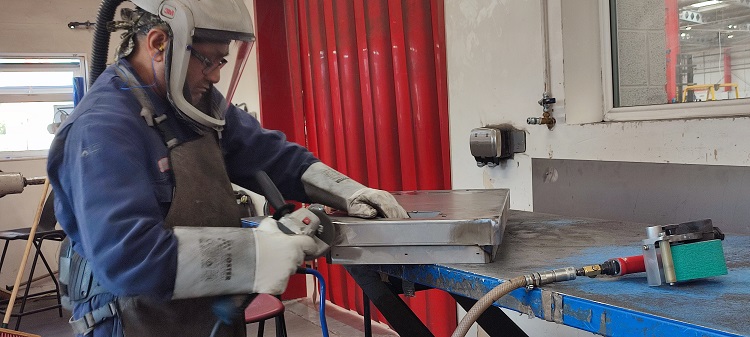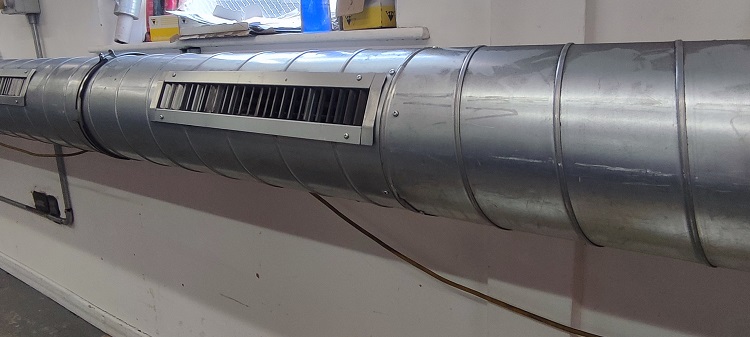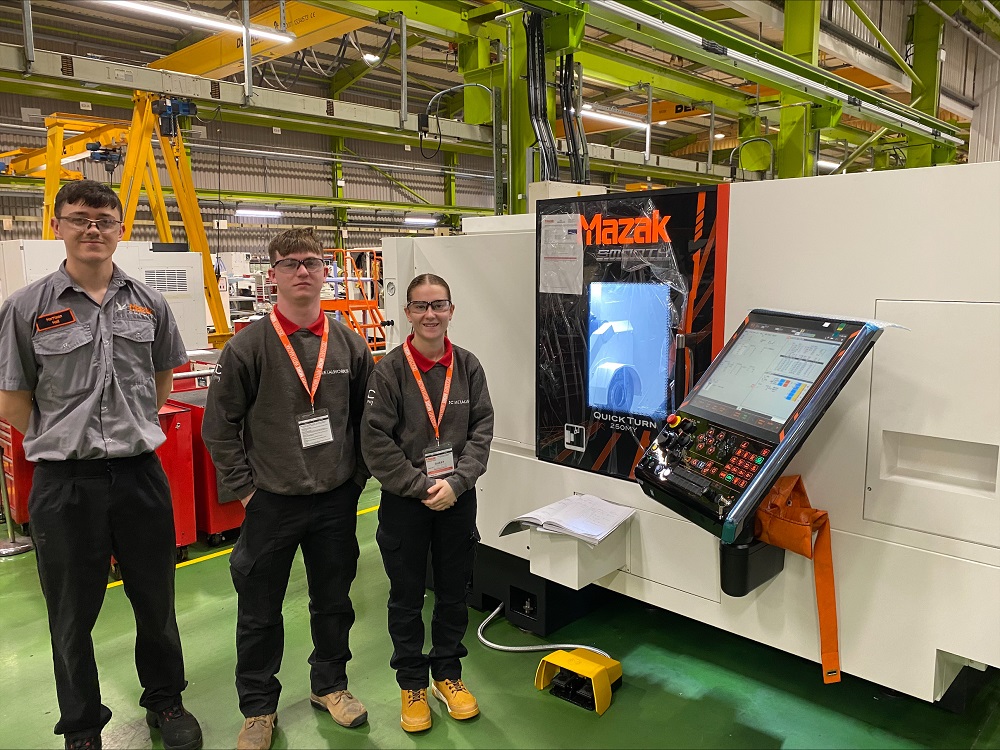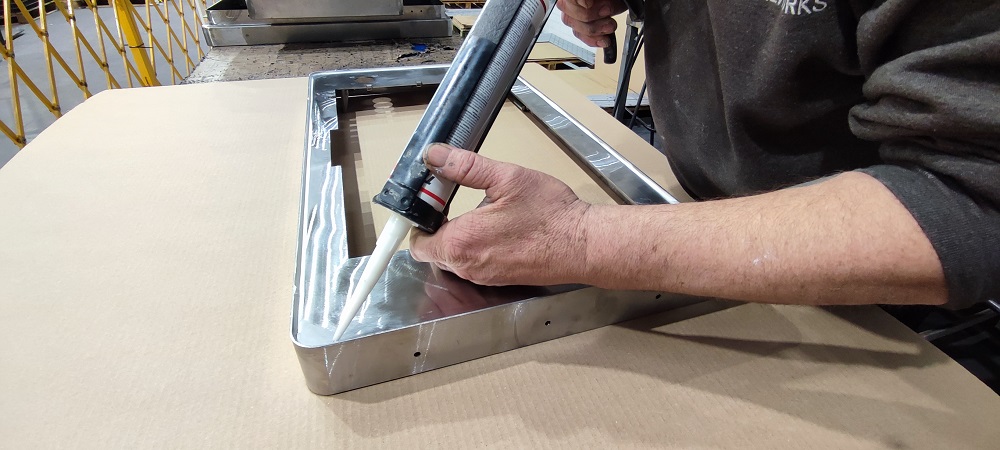Linishing, also known as grinding or polishing, is a standard post-welding process that involves smoothing and finishing the surface of a welded joint or metal component in sheet metal fabrication.
At JC Metalworks, our expert operative knows the crucial factors to consider before linishing. Here are some of them:
Selection of appropriate abrasive
When it comes to linishing, selecting the right abrasive material and grit size is essential for achieving precision. Several factors must be considered, such as the type of metal being worked on, the desired surface finish, and the specific imperfections that require correction. Abrasives differ in cutting abilities, aggressiveness, and durability, so choosing the appropriate one is necessary to achieve the best possible material removal while avoiding excessive damage or changes to the workpiece dimensions.

Equipment and tooling
The selection and maintenance of linishing equipment and tools are vital for accuracy. High-quality, well-maintained linishing machines, such as belt sanders or grinding machines, contribute to consistent and precise material removal. The condition of abrasive belts or discs is also essential, as worn or damaged abrasives can lead to uneven results or unwanted surface irregularities.


Technique and pressure control
Proper technique and pressure control during linishing significantly impact accuracy. The metal fabricator should maintain a consistent and even pressure across the workpiece, avoiding excessive force that may result in uneven material removal or damage to the underlying metal. Moving the linishing tool steadily and uniformly ensures the entire surface is evenly treated.
Fixture or clamping
Depending on the size and shape of the workpiece, securing it in a fixture or using clamps can help maintain stability during linishing. This reduces vibration and ensures that the workpiece remains in the desired position, enabling accurate material removal and preventing distortions.
Surface inspection and measurement
Regular workpiece inspection during the linishing process is crucial to ensure accuracy. Visual inspection can help identify imperfections, uneven areas, or remaining weld defects that need further attention. Additionally, our operatives use measuring tools such as callipers, micrometres, or depth gauges for precise measurements and to ensure that the desired dimensions and tolerances are achieved.
Safety precautions
Safety is of utmost importance during finishing operations. Fabricators should wear appropriate personal protective equipment (PPE), such as safety goggles, gloves, and hearing protection, to protect themselves from flying debris, sparks, and noise. Following proper safety procedures and guidelines minimises the risk of accidents and ensures a safe working environment.

The Linishing Room at JC Metalworks
Our linishing room is carefully designed with various features to promote efficiency, safety, and optimal results. Extraction and exhaust systems are integral components of the room; they are crucial in removing the hazardous fumes, dust, and airborne particles generated during linishing.
Here are some of the room’s key features
Safety measures:
Safety is paramount in a linishing room. The area has features such as emergency stops, proper machine guarding, and clear signage indicating safety protocols. As required, adequate personal protective equipment (PPE) is also provided to operatives, including goggles, gloves, hearing protection, and oxygen masks for respiratory protection.
Local exhaust ventilation:
LEV systems are specifically designed to capture and remove contaminants at their source. In our linishing area, the LEV systems consist of enclosures placed near the linishing equipment to capture dust and fumes directly from the work area. These systems are adjustable and positioned as close to the emission point as possible to capture contaminants effectively.
High-quality extraction equipment:
The room has reliable and efficient equipment, including dust collectors and fume extractors. These devices use methods like filtration, cyclonic separation, or electrostatic precipitation to remove the type of contaminants generated in the linishing process.

Ductwork and airflow design:
Our specially designed ductwork system ensures effective extraction and exhaust. The ducts are sized appropriately to maintain adequate airflow velocity and minimise pressure drop. Smooth and straight duct runs with minimal bends and obstructions help optimise the performance of the extraction system.
Appropriate Lighting:
There are properly positioned lighting fixtures, including general overhead lighting and task lighting. This help eliminates shadows and provides optimal illumination for accurate work.
Noise control measures:
We have implemented measures such as acoustic insulation, which can help reduce noise levels in the linishing room, creating a safer and more comfortable working environment.

Maintenance and cleaning:
Regular maintenance and cleaning of linishing equipment, tools, and the room itself are crucial to ensure optimal performance and longevity. We have implemented a scheduled maintenance program that helps promptly identify and address any issues, reducing downtime and ensuring consistent results.
By incorporating these features, we have created a well-designed, functional space that promotes safety, efficiency, and high-quality metal finishing operations.

Effects and benefits of Linishing include:
Surface refinement:
Linishing helps remove weld spatter, excess weld material, and any rough or uneven surfaces created during welding. It results in a smoother and more uniform surface finish.
Improved aesthetics:
By eliminating weld imperfections and irregularities, linishing enhances the visual appearance of the component. It provides a clean and professional finish, which is particularly important for applications where aesthetics matter.
Stress concentration reduction:
Welding can create stress concentration areas due to the heat-affected zone (HAZ) and the weld itself. Linishing can help to reduce these stress concentrations by blending the transition between the weld and the base metal, resulting in a smoother and more gradual change in geometry.
Enhanced corrosion resistance:
Welded joints can be more susceptible to corrosion due to residual stresses, altered microstructure, and potential crevices. Linishing removes surface contaminants, such as oxides and scales, reducing the likelihood of corrosion and improving the overall durability of the weld.
Improved weld integrity:
Linishing can reveal any defects or discontinuities in the weld, such as cracks or undercutting. By exposing these flaws, linishing allows for better inspection and ensures the weld integrity, as any necessary repairs or modifications can be made.
Precision fitting:
In some cases, linishing may achieve tight dimensional tolerances or improve the fit between welded components. Carefully removing material enables adjustments and fine-tuning of the final dimensions, ensuring proper alignment and fit.
Safety considerations:
Sharp edges, burrs, or protrusions left after welding can pose safety hazards. Linishing helps to eliminate these sharp edges, making the component safer to handle and reducing the risk of injury during subsequent use or maintenance.
Check out the video of our Linishing Room
Ease of powder coating
Linishing can facilitate subsequent processes like powder coating or adhesive bonding. Providing a smooth and clean surface improves the adhesion and effectiveness of these processes, resulting in better overall performance and longevity.
Here’s how linishing can aid in surface preparation for powder coating:
Removal of contaminants
Linishing helps eliminate contaminants such as rust, dirt, oils, and previous coatings from the surface. These contaminants can interfere with the adhesion of the powder coating and affect the overall finish. By removing them, linishing ensures a clean and bare surface, which is essential for adhesion.
Surface roughening
Linishing creates a slightly roughened surface by removing small amounts of material. This roughening provides more surface area for the powder coating to bond with, improving adhesion strength and durability.
Smoothing out imperfections
Linishing can address imperfections, such as weld spatter, uneven surfaces, or rough edges, which may be present after welding or fabrication. Smoothing out these imperfections ensures a more uniform surface, reducing the risk of coating defects and improving the overall appearance of the powder-coated finish.
Surface activation
In some cases, linishing can aid surface activation, especially when dealing with metals prone to oxidation or low surface energy. The mechanical action of linishing can help remove oxide layers or contaminants, exposing a fresh, clean surface that is more receptive to powder coating adhesion.
In the field of steel metal fabrication, it is crucial to master linishing and finishing techniques. At JC Metalworks, our operatives produce impeccable metal products using these techniques.





Leave a Reply